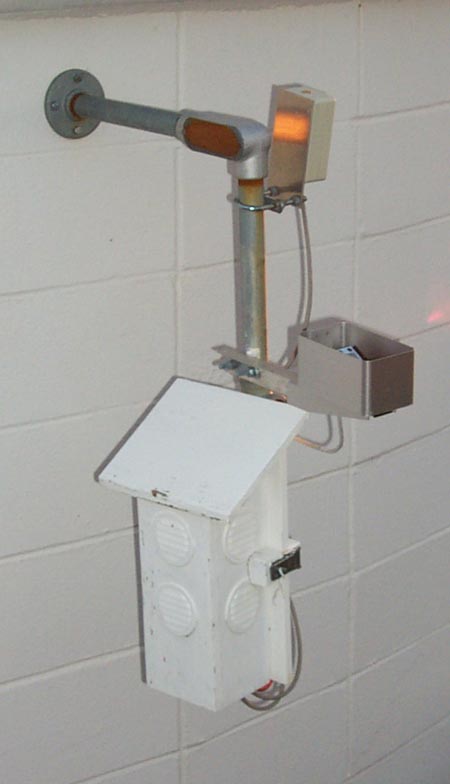Lick Weather Explanation
The data are collected by the computer at the Katzman
Automated Imaging telescope at Lick Observatory,
located near the water tanks on the high hill East
of the Three Meter Telescope dome.
 The weather is collected every half hour and about
38 entries are kept.
The entry time is in Unversal time.
The weather is collected every half hour and about
38 entries are kept.
The entry time is in Unversal time.
Temperature
Measures the temperature of the telescope frame
(indoor) in degrees Celsius.
The calibration is good to about +/- 1.0C.
A second sensor measures the outside air temperature
(OAT) in a white box mounted on the East side of the dome.
The sun make strike the box at certain times of the day
and therefore the sensor may not
reflect the true air temperature.
Humidity
The Vaisala electronic humidity gauge
is mounted on the
East side of the dome.
It currently reads about 15% high.
The units are percent Relative Humidity.
It is mounted in the louvered housing shown on the photo
to the right.
Windspeed and Direction
The wind information is derived from the indicators
atop the water tank.
These are the same ones that are telemetered to the 3m
dome on the Bendix readouts.
The accuracy is the same as the meter readouts.
The integration time is about 1 second.
North is defined as 0 degrees East is 90.0.
The wind speed is in mph.
IR 'cloud' detector
An infrared thermopile Model 2M made by
Dexter Research
sensitive to the 8-14 micron
region is pointed at a ~30 degree wide field
to the East of zenith.
The detector is inside the grey box at the top
of the photo shown to the right.
It measures the cloud temperature.
(1/8/97) current calibration is:
- 1.3 volt is ambient (i.e. totally overcast)
- ? volt fairly thick
- ? volt is medium thick haze
- 0.95 volt is clear.
They have been converted to a linear 'cloud' scaling
of 1 for overcast and 0 for clear. The
scaling values will change.
The sensor can become covered with frost or dew
and give false cloudy readings.
Rain
The
Vaisala DRD11A
rain sensor returns the value 1 when wet and
0 when dry.
Dew
Is a misnomer, it is the analog indication of the
rain sensor and is 3.0 minus the output volts from
the sensor.
The reading of 0 therefore is totally dry and
increasing values indicate more water.
Last Updated June 2, 2000
rtreffers@astro.berkeley.edu
 The weather is collected every half hour and about
38 entries are kept.
The entry time is in Unversal time.
The weather is collected every half hour and about
38 entries are kept.
The entry time is in Unversal time.
 The weather is collected every half hour and about
38 entries are kept.
The entry time is in Unversal time.
The weather is collected every half hour and about
38 entries are kept.
The entry time is in Unversal time.